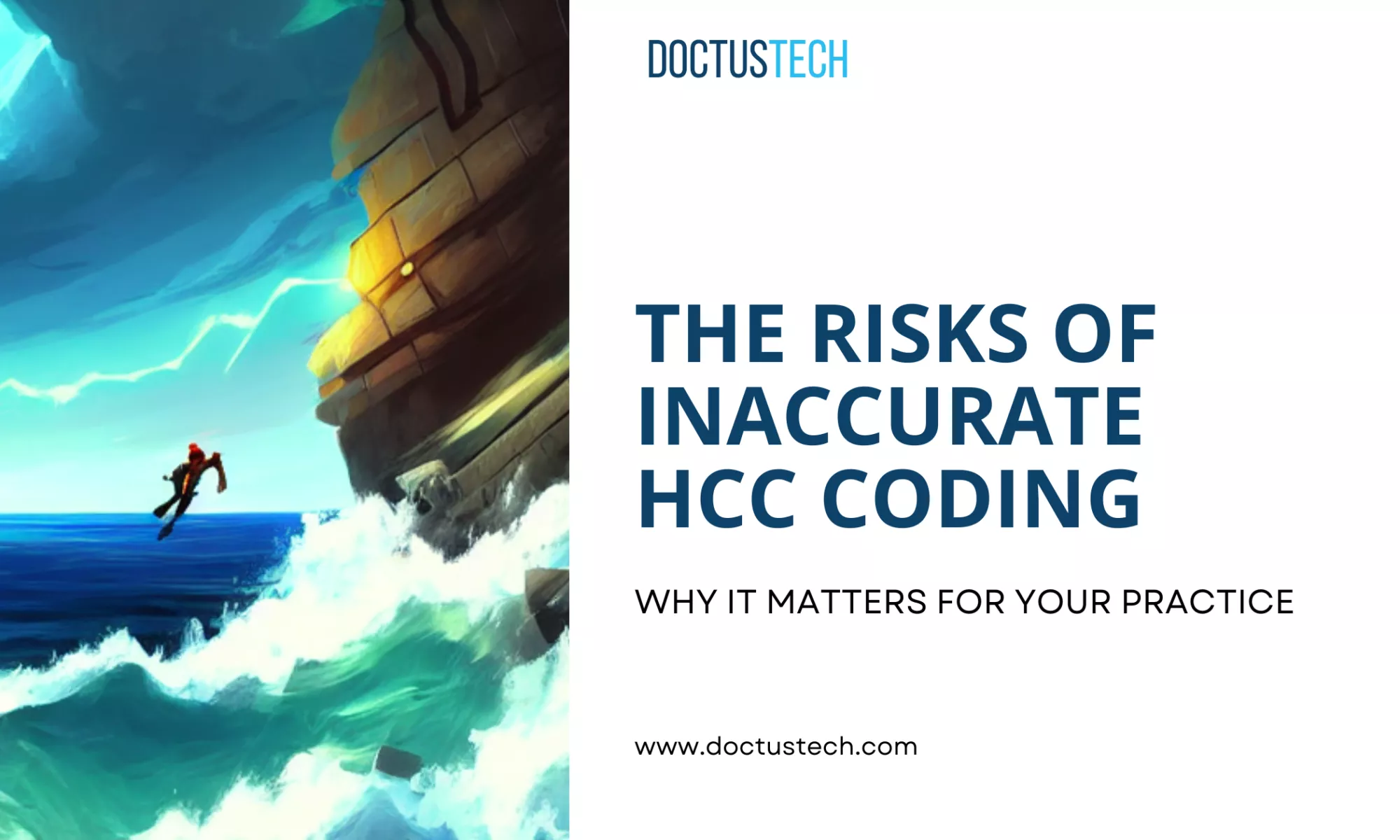You’ve done training before, but documentation errors keep creeping in. Charts are missing key HCC codes, chronic conditions aren’t being redocumented, and you’re starting to wonder—will we be scrambling at the end of the year to fix all this? Sound familiar?
That’s precisely why a Risk Adjustment refresher course exists. They’re not just another box to check off; they’re a way to keep risk adjustment top of mind for your team, improve documentation habits, and make sure your team is set up for success—without a last-minute panic.
Let’s explore what makes a practical refresher course, how to structure it, and how to measure its impact.
Understanding the Role of a Risk Adjustment Refresher Course
A Risk Adjustment refresher course shouldn’t be a boring PowerPoint presentation about HCC coding. It’s a strategic touchpoint to reinforce best practices and help teams avoid common documentation pitfalls. Done right, it can mean the difference between a smooth, well-documented year and a frantic scramble to correct errors before submission deadlines.
For example, if you notice that documentation rates are lower than expected by Q1, you can run a refresher course focusing on redocumentation, workflow improvements, and CMS compliance. This way, clinicians can work toward improving their HCC coding accuracy and avoid an end-of-year crunch by maintaining consistent documentation throughout the year.
How Often Should You Run a Risk Adjustment Refresher Course?
Most teams schedule a Risk Adjustment refresher course at least once a year, but successful organizations integrate them more frequently:
-
- Quarterly Check-Ins: These are structured sessions designed to dive into performance metrics, documentation trends, and improvement areas. Leadership teams, clinical directors, and coding specialists review redocumentation rates, audit findings, and CMS guideline adherence to ensure the organization is on track.
-
- During Morning Huddles: These brief but focused meetings integrate risk adjustment updates into daily workflows. They highlight immediate concerns, such as specific documentation gaps, coding errors, or upcoming CMS compliance changes, ensuring real-time course correction.
-
- On-Demand Learning: A flexible solution that benefits all organizations. Small practices appreciate its practicality, as clinicians can learn at their own pace without disrupting patient care. Large healthcare systems value its scalability, allowing multiple locations and teams to receive standardized training. One solution that fits all is the DoctusTech Learning App, preferred by 9 out of 10 clinicians.
-
- Case-Based Discussions: Highly beneficial for specialists (e.g., cardiologists, endocrinologists) working within VBC models. Reviewing real patient cases ensures that documentation aligns with both clinical and risk adjustment requirements. In primary care, case-based discussions can be equally impactful when tailored to address specific documentation gaps, such as under-documentation of major depressive disorder.
5 Key Ingredients of an Effective Refresher Course
1. Reinforce the “Why” Behind Risk Adjustment
Let’s be honest—clinicians and coders are busy. If they don’t see the value, they won’t engage. A good refresher starts by connecting documentation back to what matters:
-
- Better Patient Care: Ensuring conditions are properly documented leads to better treatment and follow-up.
- Financial Impact: Without proper documentation, known chronic conditions won’t be reimbursed, leaving money on the table.
- Compliance Risks: Missing redocumentation can mean non-compliance, audits, and clawbacks.
2. Address Common Documentation Pitfalls
If you had to pick one thing to focus on in a refresher, it should be redocumentation. Too often, chronic conditions from the previous year aren’t re-recorded, leading to missed reimbursement opportunities. Providers risk losing credit for previously diagnosed conditions without re-documentation, ultimately impacting risk scores and reimbursement accuracy.
To put this into perspective, consider the following scenario: Your team currently documents only 28% of chronic conditions annually, which means that 72% go unreported, leading to gaps in patient care and lost revenue.
So, what can you do to fix this? Here’s how to approach it:
-
- Set Clear Goals: Aim to redocument at least 95% of chronic conditions annually.
-
- Analyze Past Performance: Review last year’s documentation and compare it to the current year’s HCC submissions. Identify missing chronic conditions and implement structured reminders.
-
- Reinforce Best Practices: Encourage clinicians to consistently review past diagnoses and document conditions accurately during visits where time allows. Another option is to take advantage of your scheduled check-ins, such as annual wellness exams or routine checkups, to have more opportunities to focus on comprehensive documentation.
Beyond redocumentation, there are other documentation pitfalls that refresher courses should address:
-
- Not specifying diagnoses (e.g., using “unspecified depression” instead of “major depressive disorder, recurrent, moderate”).
- Incomplete screening and lab orders, leading to missed coding opportunities.
- Lack of documentation for conditions that impact risk scores, which affects reimbursements and compliance.
3. Make Workflows More Efficient
Many documentation errors happen because workflows aren’t optimized. A Risk Adjustment Refresher Course could:
-
- Identify where documentation is breaking down.
- Reinforce clinic workflows to ensure proper HCC coding at the point of care.
- Highlight small workflow changes that have a significant impact (e.g., structured templates in the EMR to ensure required documentation is included).
4. Stay Aligned with CMS Guidelines & Coding Updates
CMS updates its guidelines every year, and staying ahead of these changes is critical. A refresher course should:
-
- Summarize major updates (e.g., the addition of “Class 3 Obesity” as a new ICD-10 code).
- Explain how these updates affect documentation and reimbursement.
- Provide easy-to-follow guidance for clinicians on adapting to changes.
5. Use Engaging Teaching Methods
Nobody wants to sit through a dry, technical lecture. Make refresher training engaging and practical:
-
- Case-Based Learning: Walk through real patient scenarios.
- Microlearning Modules: Short, focused lessons clinicians can complete in minutes.
- Quizzes & Gamification: Make learning interactive.
- Customized Learning Paths: Tailor training based on common documentation gaps in your organization.
How to Measure the Impact of a Refresher Course
Training is only valuable if it leads to measurable improvements. Here’s what to track:
1. Redocumentation Rates
-
- Metric: The percentage of previously diagnosed HCC conditions was redocumented this year.
- Target: 95% or higher.
- Actionable Insight: If redocumentation is low, find out why clinicians are forgetting, or use software that helps you automate this goal such as DoctusTech’s PDAP.
2. Coding Accuracy & Specificity
-
- Metric: Reduction in unspecified diagnosis codes.
- Target: More detailed diagnoses (e.g., “major depressive disorder, recurrent, moderate” instead of “unspecified depression”).
3. Number of New HCC Codes Captured
-
- Metric: Number of new chronic conditions documented per patient visit.
- Consideration: This varies—clinics new to HCC coding may capture more than established ones.
4. Compliance & Internal-Audit Performance
-
- Metric: Percentage of charts flagged for coding inaccuracies pre- and post-training.
- Insight: Documentation errors should decrease over time if refresher courses are practical.
These are basic KPIs to monitor before and after your refresher course to check if it works and identify areas for improvement. However, if you want to go deeper into metrics and you’re just starting a Risk Adjustment initiative, we recommend the article 4 Essential Risk Adjustment KPIs for Your First 90 Days.
When to Implement Additional Retraining
Even with regular refresher courses, some teams may need extra help. Consider retraining when:
-
- Redocumentation rates drop below expected levels.
- Certain conditions are underreported compared to regional benchmarks.
- Audits reveal frequent coding mistakes or unspecified codes.
- CMS guideline updates require immediate adaptation.
Final Thoughts
A great refresher course isn’t just about reviewing rules—it’s about making risk adjustment easier, more efficient, and more effective. By keeping training engaging, aligning it with real-world workflows, and tracking meaningful metrics, organizations can improve compliance, maximize reimbursements, and ultimately deliver better patient care.
A Risk Adjustment Refresher Course doesn’t have to be a chore. When done right, they become a powerful tool for making risk adjustment second nature in your organization. And with DoctusTech’s HCC coding education app, staying on top of your training has never been easier. Delivered weekly right to your phone, our app provides individualized learning to help VBC organizations like yours increase RAF accuracy by 30%.
Try DoctusTech’s app for free for 14 days and see how our solutions can enhance your approach to risk adjustment.



















































